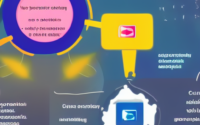Innovations in Green Computing and Sustainability
Innovations in Green Computing and Sustainability
Introduction:
Green computing is an emerging field that focuses on designing, manufacturing, and using computer systems in an environmentally friendly manner. With the increasing concerns about climate change and the need for sustainable practices, the technology industry is actively seeking innovative solutions to reduce its carbon footprint and promote sustainability. In this article, we will explore some of the latest innovations in green computing and how they are contributing to a more sustainable future.
Energy-Efficient Hardware:
One of the primary areas of focus in green computing is developing energy-efficient hardware. Traditional computer systems consume substantial amounts of energy, contributing to greenhouse gas emissions. However, advancements in hardware design have led to the development of energy-efficient components such as processors, memory modules, and storage devices.
Manufacturers are now incorporating power-saving technologies, such as low-power modes and intelligent power management systems, into their products. This not only reduces energy consumption but also extends battery life for mobile devices. Furthermore, the use of energy-efficient hardware has allowed data centers to operate more efficiently, reducing their overall energy consumption and environmental impact.
Renewable Energy Sources:
To further enhance their sustainability efforts, many technology companies are shifting towards renewable energy sources to power their operations. Data centers, which are notorious for their high energy consumption, are now being powered by renewable energy such as solar, wind, and hydroelectric power.
Companies are investing in building their own renewable energy infrastructure, such as solar farms and wind farms, to generate clean energy for their data centers. Additionally, partnerships with renewable energy providers and the purchase of renewable energy credits help offset the carbon footprint of technology companies. This integration of renewable energy sources not only reduces greenhouse gas emissions but also promotes the development of clean energy technologies.
Virtualization and Cloud Computing:
Virtualization and cloud computing have revolutionized the way technology resources are managed, leading to significant sustainability benefits. By consolidating multiple physical servers into virtual machines, virtualization reduces the number of physical devices required, resulting in lower power consumption and reduced e-waste.
Additionally, cloud computing eliminates the need for individual users or organizations to maintain their own data centers, which can be highly energy-intensive. By leveraging shared infrastructure and optimizing resource utilization, cloud computing providers can achieve higher energy efficiency and reduce environmental impact.
Moreover, the cloud allows for dynamic allocation of computing resources, enabling users to scale their infrastructure based on demand. This flexibility helps eliminate the need for underutilized servers, saving energy and resources.
Circular Economy and E-Waste Management:
The linear model of ‘take-make-dispose’ is not sustainable in the long term, especially in the technology industry, where electronic waste (e-waste) is a significant concern. To address this, the concept of the circular economy has gained traction within the field of green computing.
The circular economy aims to minimize waste and maximize the lifespan of products through strategies such as repair, refurbishment, and recycling. Technology companies are now designing their products with longevity and recyclability in mind. They use eco-friendly materials, modular design approaches, and promote easy repairability to extend the lifespan of devices.
Furthermore, proper e-waste management is crucial in mitigating the environmental impact of technology. Many companies now offer e-waste recycling programs for their products, ensuring that discarded devices are responsibly recycled and valuable materials are recovered for reuse.
Smart Energy Management Systems:
Smart energy management systems are playing a significant role in optimizing energy usage and promoting sustainability in various settings. These systems leverage technologies such as sensors, data analytics, and machine learning algorithms to monitor and control energy consumption.
In office buildings, smart energy management systems can identify energy wastage, optimize heating and cooling systems, and automatically turn off lights and devices when not in use. Similarly, in data centers, these systems monitor server utilization and adjust cooling strategies to maximize energy efficiency.
By implementing smart energy management systems, organizations can reduce their energy consumption, lower operational costs, and contribute to a greener environment.
Conclusion:
The advancements in green computing and sustainability are driving the tech industry towards a more environmentally conscious future. Energy-efficient hardware, renewable energy sources, virtualization, circular economy practices, and smart energy management systems are just a few examples of how technology companies are striving to reduce their carbon footprint.
As consumers, businesses, and governments continue to prioritize sustainability, it is essential for the technology industry to embrace these innovations and work towards creating a more sustainable and eco-friendly digital ecosystem.


